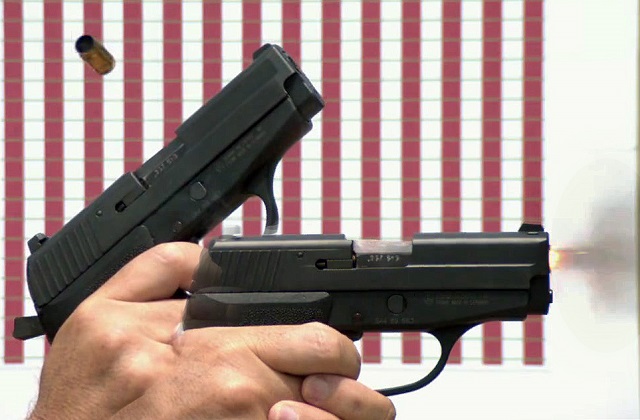I was training a woman for precision rifle shooting when she showed me her defensive handgun: a S&W M&P Bodyguard 380. This is a very small pistol: 5.25″ long, 4″ high, and just 0.75″ thick! Its dimensions make it easy to carry concealed, but can make it tricky to shoot.
This woman’s hands are almost as large as mine (which are 8″ long and 3.5″ wide mid palm), so I asked to see how she was able to handle such a small gun. Through practice on her own, she had concluded that even though she is both left-handed and left-eye dominant she shot it better with her right hand. Since it’s a double-action-only gun with a long, heavy trigger, she had resorted to pulling the trigger using the second knuckle. She noted that doing this she would often hit the magazine release with the tip of her trigger finger, but she didn’t know how else to run the gun. She also couldn’t figure out how to get her support hand on the gun, and so she presented it with the largely ineffective “teacup” hold.
The same guidance for holding guns that fit can be applied to holding undersized guns. Of course, the first order of business was to nix the idea of pulling the trigger with anything other than the center of the first joint of the strong hand’s index finger. (With large hands it can often be necessary to arch the trigger finger outward, but you never compromise on this point.) Then I showed her how to follow the usual steps of establishing a proper handgun grip:
- Push the firing hand web between the thumb and trigger finger as high on the grip as possible.
- Find a “home” position for the trigger finger outside the trigger guard, and then close the remaining fingers and palm snugly around the grip.
- Now snug the support hand up and around the gun and trigger hand in order to maximize contact with its palm and fingers.
- Ensure that the support thumb and index finger don’t interfere with the gun’s controls or the trigger pull. (Typically the support thumb will rest parallel and ahead of the trigger hand’s thumb. The support index finger needs to find a home too, and while that is often atop the knuckle of the trigger hand’s middle finger, on some guns it can instead find a consistent grip on the front of the trigger guard.)





